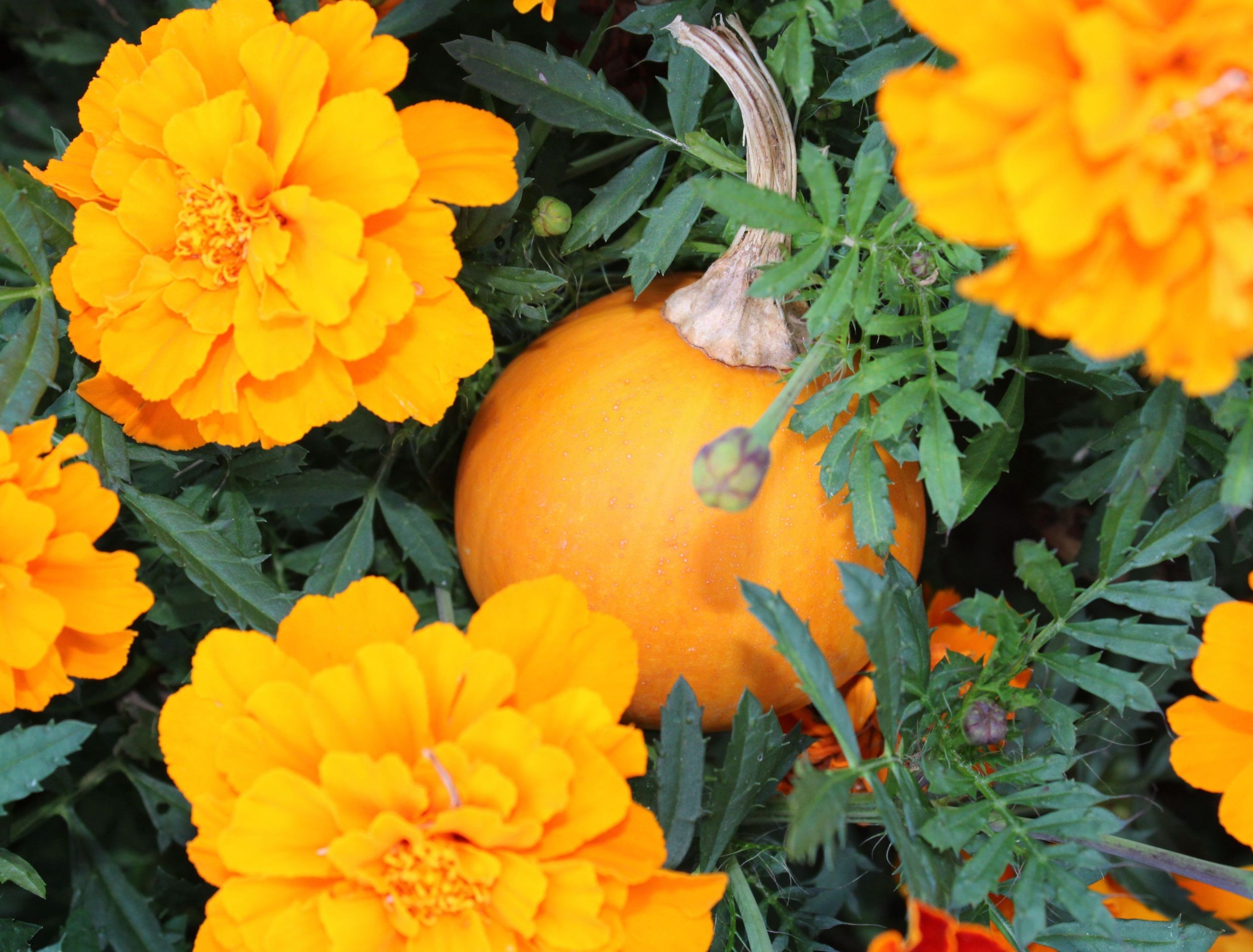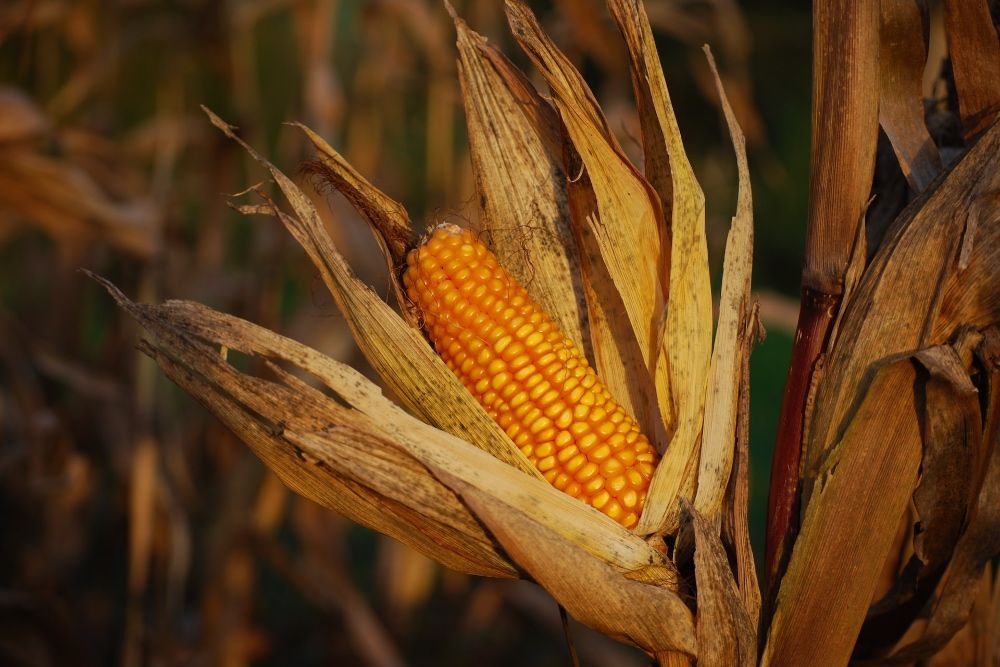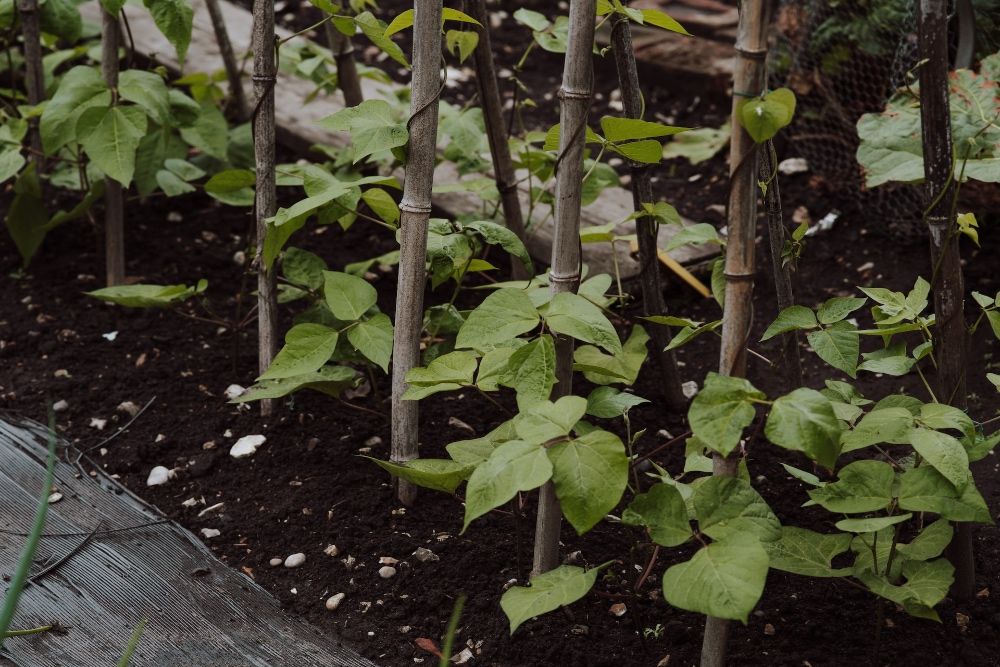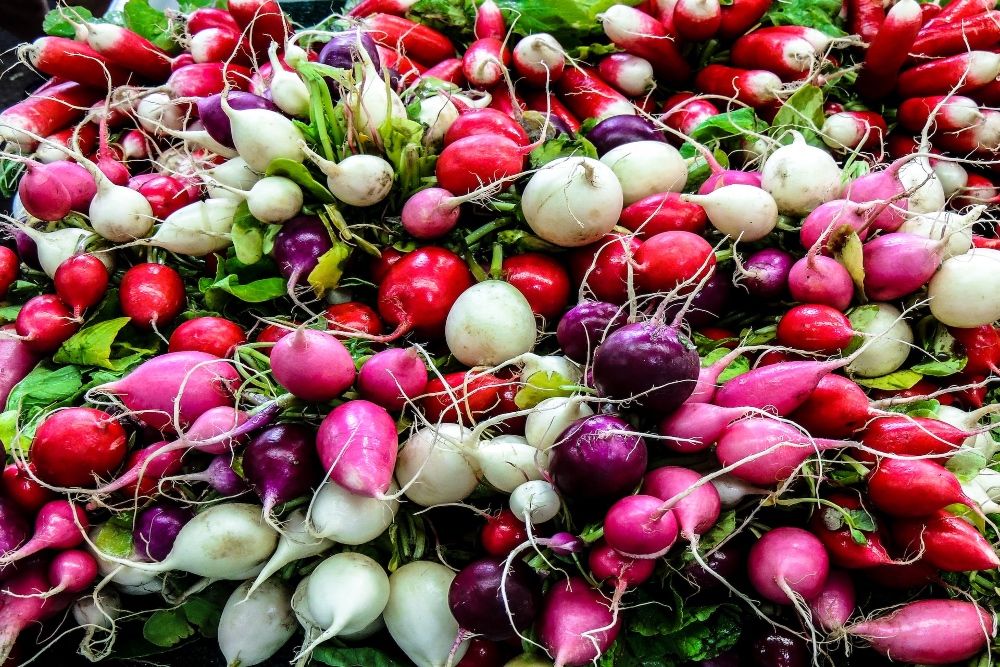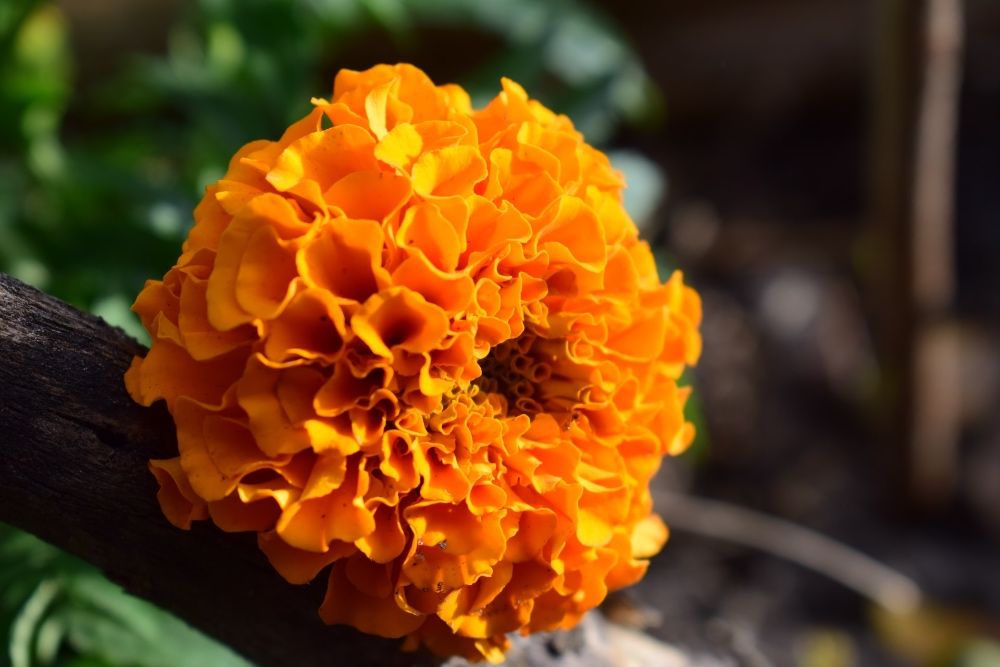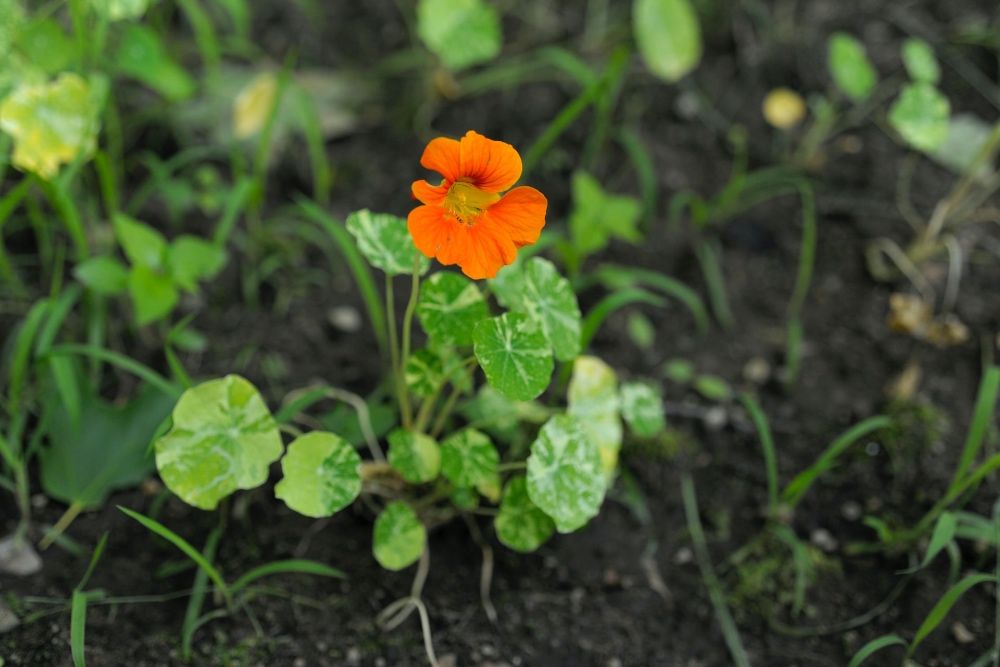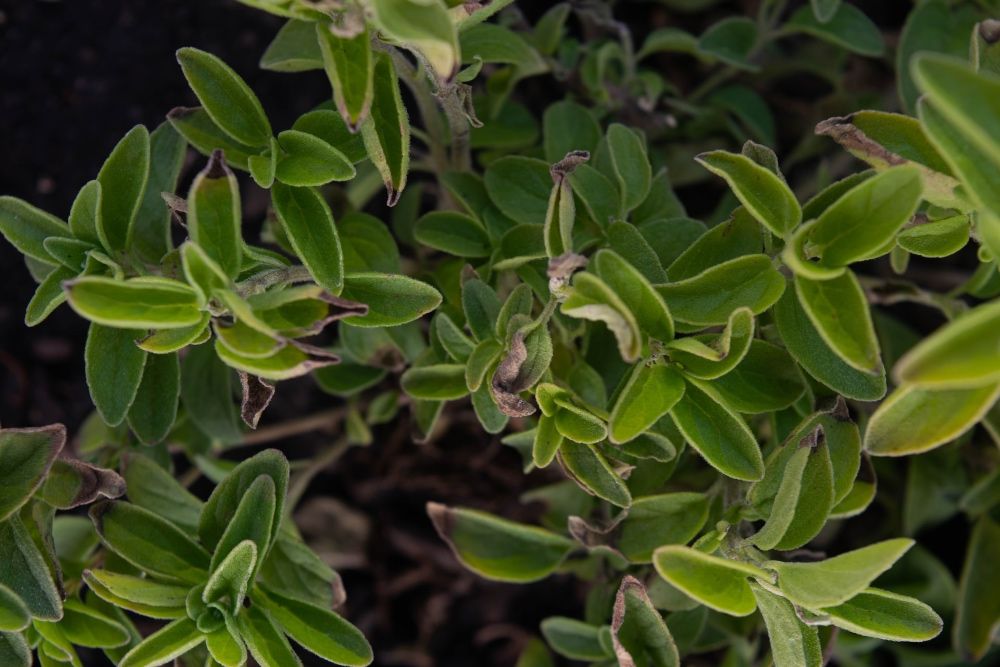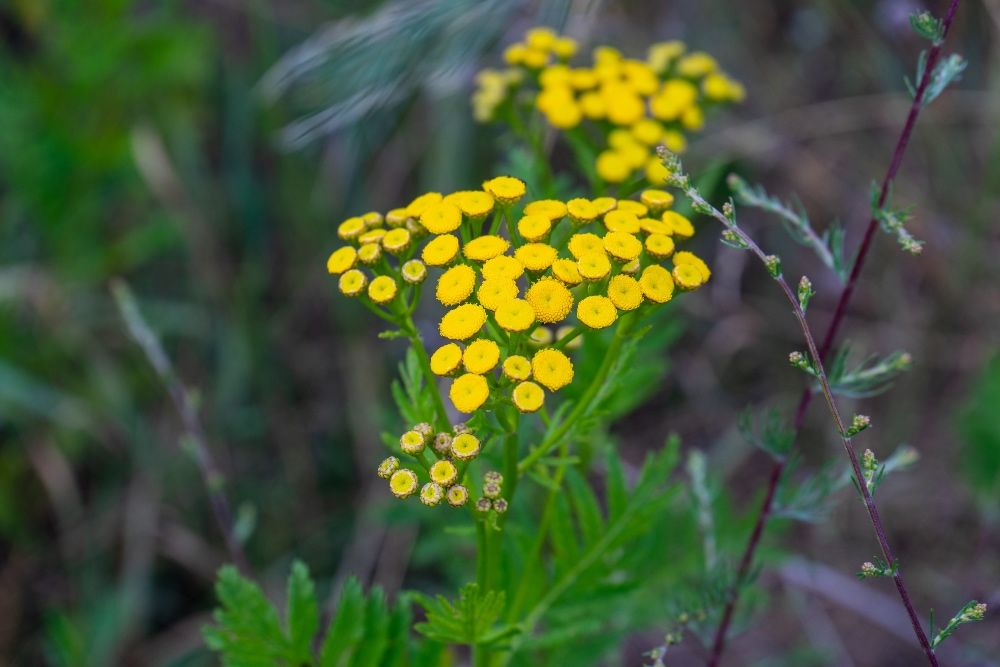Pumpkins are friendly, they love having neighbors to grow next to, and are commonly known as one of the three sisters. Pumpkin, corn and beans make up the three sisters, and although they might seem like an odd combination they all mutually benefit each other when grown in close proximity (keep reading for more details!). This is one of the best known examples of companion planting.
Companion gardens involve growing certain plants close to each other either for mutual or one-sided benefits. These benefits include saving space in the garden, soil health, physical support, and pest control. There are many examples of companion plants that do well together, and pumpkins are one that definitely do well with some neighbors. If the proper companions are chosen, the pumpkins will have better-growing conditions, less risk of bug infestation, and give you less work to maintain your garden when the plants all benefit each other!
1. Corn
Image credits: Christophe Maertens via Unsplash
Already mentioned as part of the three sisters, corn and pumpkins have been grown together for ages. They mutually benefit each other as corn needs a lot of sun and with its height provides shade for pumpkins. The corn also provides a stalk for small vines to climb up.
On the other hand pumpkins benefit corn by spreading out when they grow, creating a nice blanket of vines and leaves to keep weeds to a minimum and help lock moisture into the soil.
2. Pole Beans
Image credits: Annie Spratt via Unsplash
The final plant to complete the three sisters trio, beans! A dry bean is best in the three sisters group because they are only ready for harvest when they are mature. Harvesting an immature bean adds to the risk of stepping on the still growing pumpkin vines.
Luckily, corn provides a stalk for the beans to grow, allowing them to take up less space in gardens. The beans also benefit pumpkins by providing nitrogen back into the soil, which pumpkins need to succeed!
3. Radishes
Image credits: Philippe Collard via Unsplash
If there was a fourth sister, it would be the radish, as they get along very well with corn, beans, and pumpkins. Cooler weather is ideal for growing radishes, but they can even tolerate cold temperatures.
Radishes are impressive at keeping beetles away from any of their neighbors and are specifically helpful for repelling squash borers from pumpkins.
4. Marigold
Image credits: Jacinto Diego via Unsplash
Marigolds are sturdy plants that work well with pumpkins as they last well into late fall. They don’t need much water and prefer well-drained soil. Marigolds are a beautiful addition to any garden and look especially complimentary next to pumpkins.
Additionally, they deter all kinds of beetles like cucumber beetles and squash bugs, keeping your pumpkins safe. Marigolds are great at attracting beneficial insects, such as ladybugs and wasps, which are good pollinators.
5. Nasturtium
Image credits: Lucy Wolski via Unsplash
Nasturtium is a wonderful addition to many gardens as it is a powerhouse at deterring many garden pests. Nasturtium is great at repelling specific pumpkin pests such as squash bugs and striped pumpkin beetles. This lovely flower has similar companion planting benefits as marigolds.
Nasturtiums thrive in poor soil with low moisture and no fertilizer. So, although their growing conditions are not compatible with pumpkins, they are just as effective at pest control when potted and placed in a garden bed or surrounding pumpkin plants.
6. Oregano
Image credits: Charles C. Collingwood via Unsplash
Oregano is a diverse herb many people use to cook everything from pizza to pasta to steak. Many people grow oregano inside, but it also thrives in an outdoor environment with well-drained soil and lots of sunlight.
When grown around pumpkin, oregano acts as effective pest control. It helps to keep a large variety of bugs away, especially cabbage moths who like to lay their eggs on pumpkin leaves.
7. Tansy
Image credits: Ando Shev via Unsplash
Just like pumpkins, tansy grows best when it receives a lot of sunlight. Tansy is a powerful pest deterrent and repels many unwanted visitors including squash bugs, ants and mice. Aromatic herbs are a great choice when looking for companions for pumpkins.
However, tansy comes with a warning, when eaten or used in excess it is toxic to many animals including dogs, horses, cows and even humans. So, if you do choose this option as a companion plant for your pumpkin patch, make sure you have the right precautions in place to keep your little ones out of the area.
Everyone Needs A Friend
Companion planting is a great way to incorporate plants into a garden together, all while giving them the best chance to grow in a healthy environment. Between saving space, deterring pests and creating better soil quality there is a benefit to companion planting for everyone with a garden, especially those with pumpkins in them. Plus, happy and healthy plants mean less work for the person taking care of them.
If you have pumpkins in your garden this year let us know what you have growing with them! Also let us know in the comments what you are going to plant with your pumpkins next year!

